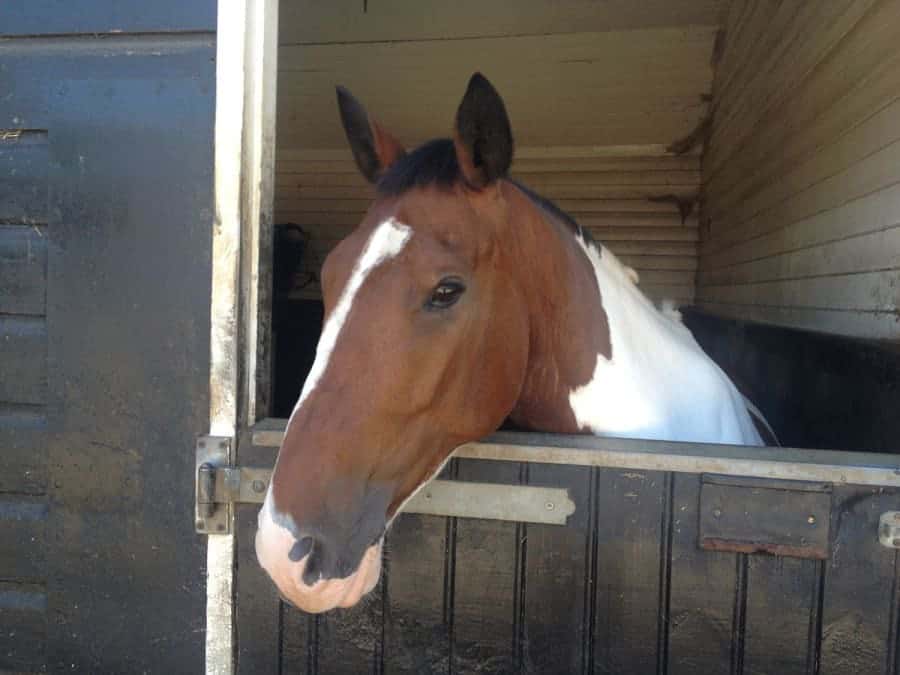Do I need to worm my horse this winter?

An H&C viewer has written to us for advice about whether or not she needs to worm her horse this winter…
“Dear H&C, I had a faecal worm egg count (FWEC) done for my horse at the end of October and it came back negative. However, my local tack shop told me I still need to worm for encysted small redworm, tapeworm and bots. The worm count said no eggs were seen – what should I do?”
Wendy Talbot, Vet at Zoetis, answers:
Firstly, I’m pleased you have discussed your horse’s winter parasite control with your local tack retailer, who as a Suitably Qualified Person (SQP) is licensed to prescribe and sell wormers and to provide you with informed and sensible advice.
Although your horse’s FWEC was negative, there are in fact three common parasite threats that will not show up in a standard FWEC: encysted small redworm, tapeworm and bots. It is very important to treat for these parasites on a strategic basis during the late autumn and early winter.
Understanding FWECs
The number of worm eggs in the dung sample are measured and reported as eggs per gram. The standard level requiring treatment is usually above 200epg, depending on the horse’s worming history.
It’s worth noting that if you receive the result <50epg (no eggs seen) this doesn’t guarantee that there were no eggs in the sample, as only a very small sample is studied under the microscope. Also, encysted small redworm, tapeworm and bots WILL NOT show up in a standard FWEC.
To reassure you, you are not alone with your worming queries. In this year’s National Equine Health Survey, 20% horse owners didn’t recognise the potential dangers of encysted small redworm. One in five who said they had treated for it used a wormer that was not licensed to treat the encysted stages of this dangerous parasite, leaving their horses at serious risk.
Eradicating encysted small redworm
Let’s start with encysted small redworm (ESRW): these are one of the most common and harmful worms found in horses. They are the larval stages of the small redworm that have buried into the lining of the gut where they lie dormant for some time.
They pose a potentially fatal health risk but won’t show up in a standard faecal worm egg count. This is because the larval stages are buried in the gut wall and therefore they do not develop into adults or produce eggs which can be tested for in the droppings.
Untreated, encysted small redworm may develop and emerge en masse from the gut wall in the early spring, causing diarrhoea and colic with a mortality rate of up to 50%. It is recommended that all horses receive a treatment for ESRW during the late autumn/winter, regardless of their faecal worm egg count.
Tackling Tapeworm
You should also consider tapeworm at this time of year because they too won’t show up in a standard faecal worm egg count. Even if with your horse’s negative FWEC it could still have a tapeworm burden. The only way to check is to ask your vet to conduct a separate tapeworm test using a blood or saliva sample.
Tapeworm are white, flattened, segmented worms which can grow up to 20cm long. They are usually found at the junction of the small and large intestine, where they attach themselves to the gut wall using suckers. They can result in a number of health-related problems, ranging from loss of condition to diarrhoea and colic. An infected horse has been shown to be 26 times more likely to develop ileal impaction colic than a non-infected horse, and eight times more likely to experience spasmodic colic.
The accepted method for tapeworm control is to break the cycle by using a wormer specifically licensed for tapeworm about every six months, traditionally in the spring and autumn.
Banishing Bots
Bots are sometimes overlooked but they can be very annoying and potentially damaging to your horse. Bots should be ideally addressed during the winter. They are the insect larvae of the bot fly and are a common adult parasite found within the horse’s stomach.
The female bot fly can lay up to 1,000 distinctive yellow eggs on the hair on your horse’s legs and shoulders or around the eyes, mouth and nose. Infection can show as mouth irritation or ulcers and stomach irritation.
It is recommended to administer a wormer licensed for the control of bots in the winter, after the first frost when the adult flies have died and before the bots mature.
Weigh before worming
Under dosing can cause resistance to occur, as can too frequent dosing or the use of a wormer to which there is already significant resistance. Dosing accurately, according to weight on a ‘need to’ basis, by using regular faecal worm egg counts, is key to managing the issue of resistance in our horses.
Simple things like knowing the weight of the horses that you wish to treat before purchasing your wormers can ensure that you have enough product to dose accurately in each case.
The most accurate way to weigh your horse is by using a weighbridge – several feed manufacturers offer a portable weighbridge service. If you don’t have access to a weighbridge then using a weigh tape will help make sure you dose your horse accurately every time.
Seek expert advice
Make sure you choose the right worming methods and products for your horse’s circumstances by discussing your worming programme with your vet or a Suitably Qualified Person (SQP). For further information visit www.wormingyourhorse.info.
You can also download Stable Mate, the horse health management App from Zoetis. It is available from the iPhone App Store and Google Play Store.






